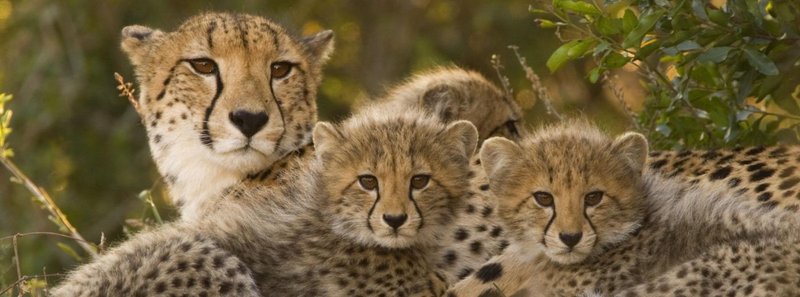
Imagine sitting with a cup of coffee, chatting about how animals in nature can inspire legends and beliefs. The cheetah is a perfect example. From African tribes that revere its swift nature to Persian myths that weave its image into tales of power and nobility, this big cat has a cultural impact that’s deep and varied. So, let’s dive into the world of folklore and see how this fast feline has left its paw prints on our stories and traditions.
The Cheetah in African Folklore
In many African cultures, the cheetah is more than just a predator; it’s a symbol of cunning and speed. For instance, among the Maasai people of Kenya, the cheetah is often featured in traditional tales. These stories frequently depict the cheetah as a clever character, outsmarting other animals. It’s a testament to how this big cat embodies qualities like quick thinking and agility.
One popular folktale tells of a cheetah who challenges a lion to a race. While the lion boasts of his strength and royal status, the cheetah relies on her speed and intellect. In the end, the cheetah’s quickness wins the day, serving as a reminder that brains can be just as important as brawn. Here’s the thing—these narratives not only entertain but also teach valuable lessons about the world, survival, and the importance of leveraging one’s strengths.
The Cheetah in Ancient Mythology
In ancient Persia, the cheetah was a creature of nobility. It was often associated with kings and royalty, seen as a status symbol that represented agility and grace. Persian kings would often keep cheetahs as hunting companions, showcasing their power and wealth. The image of a king riding a horse, accompanied by a cheetah, became a popular motif in art and architecture.
Cheetahs appeared in Persian poetry and literature, too. They were described not just for their speed but for their beauty and elegance. These references painted the cheetah as a majestic creature, merging nature with the ideals of human nobility. Honestly, when you think about it, it’s fascinating how an animal can embody such lofty traits, bridging the gap between the natural and the royal.
Symbolism of the Cheetah in Modern Culture
Fast forward to today, and the cheetah still holds significant symbolism in modern culture. In Western media, it is often depicted as a creature of speed and freedom. This image is prevalent in cartoons, documentaries, and even ads. You might have seen commercials where a cheetah zips across the screen, effortlessly capturing the essence of speed.
However, the symbolism can vary significantly. In some contexts, the cheetah represents luxury and exclusivity. Brands that focus on speed and performance sometimes use the cheetah as their mascot or inspiration. This trend shows how the cheetah continues to influence our perception of speed and elegance, proving that nature can shape marketing ideas just as much as it does folklore.
The Cheetah as a Cultural Icon
Throughout various cultures, the cheetah has emerged as an icon of strength and beauty. Its streamlined body has inspired design elements in fashion and automotive culture. For example, you might find cheetah prints in clothing lines, showing how the animal’s beauty translates into fashion. It’s a fantastic blend of nature and art, merging wildlife with human creativity.
In art, cheetahs often symbolize freedom and the wild spirit. Artists draw inspiration from their agile forms and striking features. You might find cheetahs painted on murals, illustrated in children’s books, or featured in photographs, showcasing their role in our cultural narrative. This ongoing fascination hints at our desire to connect with nature, even if it’s in a stylized, imaginative way.
Literary References and Representation
The cheetah has also made its mark in literature. In various works, it’s used symbolically to represent themes like speed, agility, and even the fleeting nature of time. For instance, in some novels, a cheetah might be used as a metaphor for a character’s struggle to keep pace with life’s demands. This is where the animal’s swift nature reflects the challenges of modern existence.
Poets have long drawn on the imagery of the cheetah to convey beauty and peril. You might find verses comparing a lover’s speed in capturing the heart to a cheetah’s dash across the plains. Just like that, the cheetah serves to spice up the language of love and longing in ways only a creature so graceful and fast could inspire.
The Cheetah in Conservation and Awareness
Today, as we face environmental challenges, the cheetah plays a crucial role in conservation efforts. Various organizations use the cheetah’s image to raise awareness about wildlife preservation. This animal, often seen as a symbol of beauty and speed, is a powerful reminder of nature’s fragility.
Conservation campaigns often highlight how important it is to protect the cheetah’s habitat, emphasizing the idea that losing such an iconic animal would mean losing a piece of cultural heritage. You might have noticed advertisements or social media campaigns that showcase the cheetah to push for conservation efforts, linking its beauty to the health of our ecosystems.
As we’ve explored, the cheetah holds a prominent place in culture and folklore across various regions. Its representation varies from clever trickster in African tales to a luxurious symbol of speed in modern branding. You might be wondering why this matters. The answer lies in the connections we forge with the natural world.
The cheetah’s story teaches us about agility, beauty, and the importance of preservation. By appreciating how this animal is represented in culture, we can better understand our relationship with nature. So, the next time you see a cheetah in a book, an ad, or even on a nature documentary, take a moment to reflect on its journey through human history—it’s a testament to the deep bonds we share with the wild.
